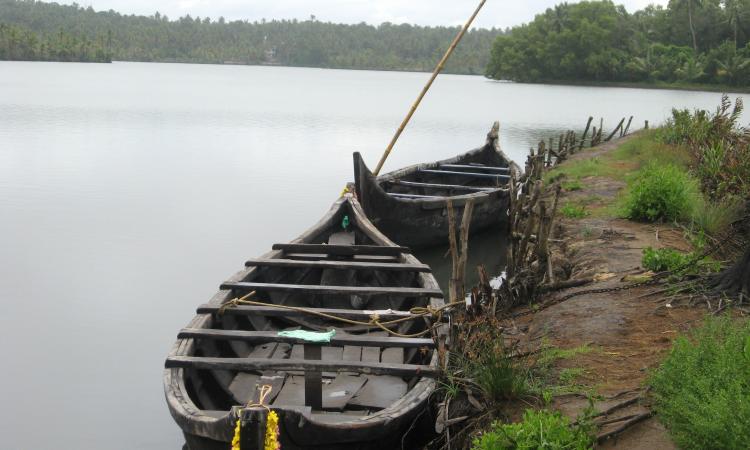
Fisheries are an important sector providing employment to millions of people in India and contributing to the food security of the country. Marine, inland fisheries and aquaculture are the main components of the fisheries sector. Around 14.49 million people in India are engaged in fisheries- related activities with about 75 percent of the fishers engaged in inland and about 25 percent in marine fisheries [1].
Poverty, marginalisation and the skills of traditional fisherfolk
Fishing techniques practised by fisherfolk are very old, and the fishermen are experts in their knowledge of fish, fish habits, waves, currents and stars. This knowledge is extremely valuable for the fishermen and is passed down from one generation to the next. Even the fishing equipment has evolved over time and differs according to the needs of the specific local fishing conditions.
However, traditional fisherfolk continue to be marginalised and poor [2] and their knowledge and skills have remained unrecognised. They face the threat of being wiped out thanks to the current push at increasing fisheries production.
Inland fisheries and fishing technologies
The papers published in the Indian Journal of Traditional Knowledge describe the traditional fishing technologies used by inland fishermen from the states of Uttar Pradesh, Tamil Nadu, Tripura, Bramhaputra valley and Barak valley in Assam, Manipur, Birbhaum and Cooch Behar districts of West Bengal, Nicobar islands , along the river Krishna and Chattisgarh respectively.
A high proportion of fisherfolk continue fishing in rivers, canals, estuaries, floodplain lakes, wetlands, lagoons, upland lakes and reservoirs, making India the second biggest inland fish producer in the world. Though India has one of the richest riverine fish gene pools and a network on hundreds of rivers, floodplains, ox bows and estuaries, the produce obtained from riverine and capture fisheries is declining sharply [2].
This has been attributed to the deteriorating environmental status of inland water bodies due to bad fishing practices and hydrological altercations such as dams, which have directly affected the country’s fish production system [2].
How can the traditional skills of fisherfolk and sustainable fisheries be revived?
The papers indicate that the traditional skills and techniques used by the fisherfolk are under threat and at the risk of being replaced by modern unsustainable technologies that damage riverine ecosystems. The success of all efforts directed at restoring inland water resources depends on understanding and recognising the important role that the fisherfolk and their knowledge of techniques can play in coping with the environmental damage.
Including fisherfolk in inland fisheries restoration activities, documenting the traditional techniques and skills practised by the fisherfolk, preventing them from using modern unsustainable technologies for fishing, encouraging the use of traditional methods, incorporating their skills and knowledge in current knowledge systems, and addressing poverty and livelihood issues of fisherfolk are thus important steps to be undertaken to devise strategies to prevent further environmental damage of the inland resources.
Understanding and adapting to the sustainable ways in which the fisherfolk have survived over the years by revering nature and not using it as a resource to be looted and plundered can be very useful to develop sustainable fisheries in the long run and preserve the health of the water resources.
The papers summarised can be accessed below:
- Traditional fishing gears used by the fisherfolk of Chatla floodplain area, Barak valley, Assam
- Traditional fishing gears of Birbhaum district, West Bengal, India
- Fishing gears operated in the lentic and lotic water bodies of Cooch Behar district, West Bengal, India
- Few indigenous traditional fishing method of Faizabad district of eastern Uttar Pradesh, India
- Traditional fish trapping devices and methods in the Bramhaputra valley in Assam
- Traditional fishing methods in the central valley region of Manipur, India
- Traditional fishing crafts and gears used by the Nicobari tribes in Car Nicobar
- Indigenous fishing devices in use of capture fishing in Tripura
- Traditional fishing techniques of tribes in Bastar region of Chattisgarh
- Fishing crafts and gear in river Krishna
- Traditional fishing practices followed by the fisherfolk of Tamil Nadu
References
[1]. Planning Commission (2012) Report of the working group on Development and Management of Fisheries and Aquaculture. XIIth FIVE-YEAR PLAN (2012 – 2017). Downloaded on the 16th of November 2014.
[2]. Dandekar Parineeta (2012) Damaged rivers, collapsing fisheries: Impacts of dams on riverine fisheries in India. South Asia Network on Dams, Rivers and People, September 2012. Downloaded on the 16th of November 2014